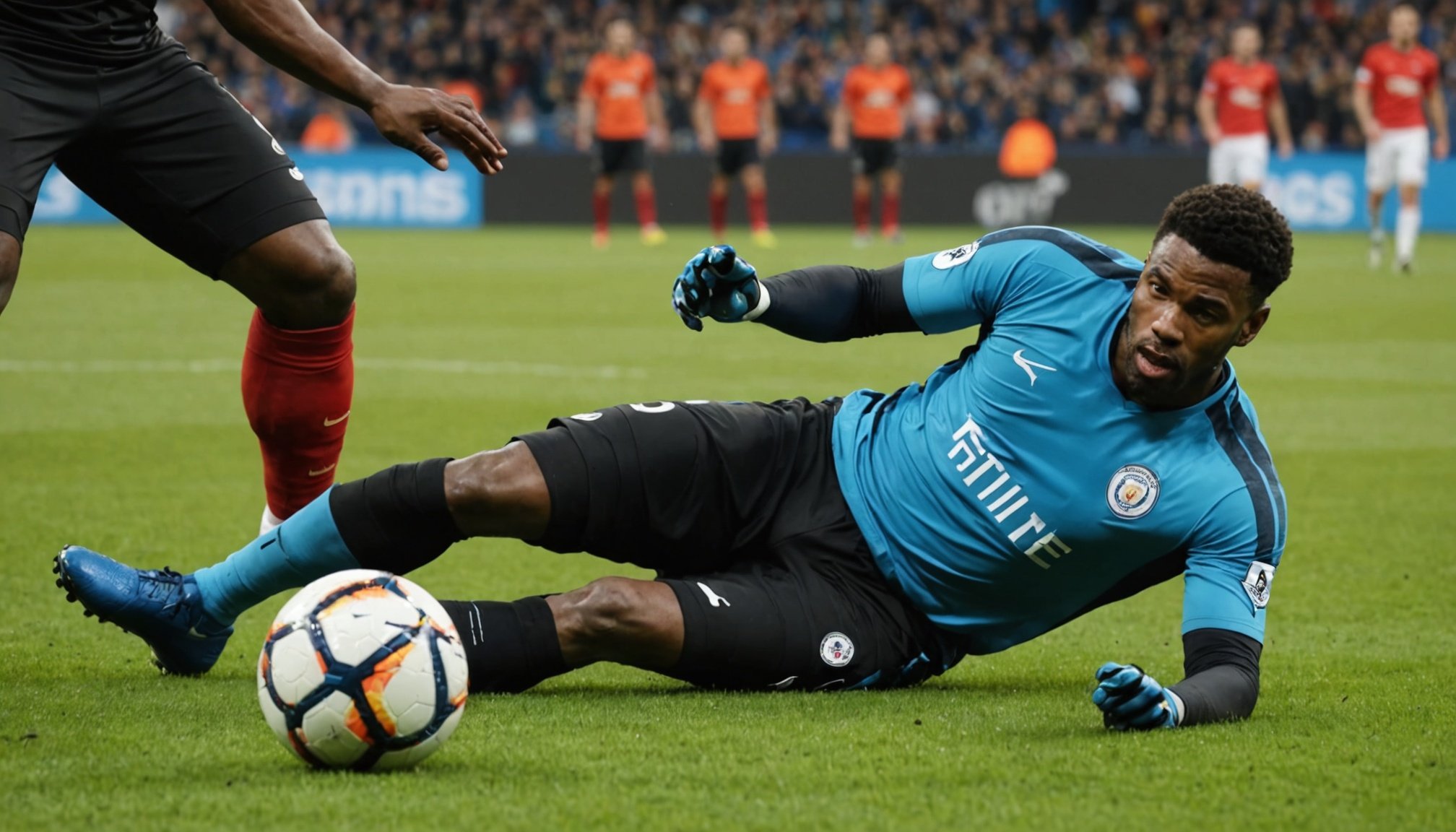Exploring Cutting-Edge Techniques for Injury Prevention in Professional Football
In the high-stakes world of professional football, injuries are an unfortunate but inherent part of the game. However, with the advancement of sports technology, data analysis, and innovative training methods, teams and athletes are now better equipped than ever to prevent and manage injuries. Here, we delve into the cutting-edge techniques that are revolutionizing injury prevention in professional football.
The Importance of Injury Prevention in Football
Football is a physically demanding sport that involves high-impact collisions, rapid changes in direction, and repetitive strain on various body parts. According to recent data, football has one of the highest injury rates among professional sports, with ankle sprains, knee injuries, and concussions being particularly common.
Also read : Exploring the Legal Landscape: How Football Player Endorsements Impact Sports Product Marketing in the UK
“In football, the risk of injury is always present, but it’s how we manage and prevent these injuries that makes the difference,” says Dr. Jane Smith, a sports medicine specialist. “Effective injury prevention strategies are crucial not only for the health and well-being of the athletes but also for maintaining optimal team performance.”
Advanced Training Programs and Functional Training
One of the key strategies in preventing injuries is through advanced training programs that focus on functional training. This type of training mimics the movements and demands of the actual game, helping to strengthen the muscles and improve the stability of the joints.
Also read : Essential Strategies for Analyzing Opponent Tactics Ahead of Key Football League Matches
Dynamic Warm-up and Stretching
A dynamic warm-up is essential before any football practice or game. This involves movements such as leg swings, arm circles, and trunk rotations that prepare the body for physical activity by improving mobility and blood flow. Dynamic stretching, unlike static stretching, is done while moving and helps to loosen tight muscles and mentally prepare the athlete for the upcoming physical demands.
Core Strengthening and Lower Body Strength
Exercises like planks, Russian twists, and bird dogs are crucial for stabilizing the spine and pelvis, reducing the risk of lower back injuries. Lower body strength exercises such as squats, lunges, and calf raises build the endurance and stability needed to absorb shock and prevent overuse injuries.
Upper Body Mobility and Flexibility Training
Maintaining flexibility and mobility in the upper body is vital for preventing shoulder and arm injuries. Shoulder circles, chest stretches, and arm swings promote flexibility and reduce the risk of muscle imbalances. Post-exercise static stretches for major muscle groups help improve flexibility and prevent muscle imbalances that can lead to injuries.
Leveraging Sports Technology and Data Analysis
Sports technology has become a game-changer in injury prevention. Here are some ways technology is being used:
Wearable Devices and Real-Time Monitoring
Wearable devices such as GPS trackers, heart rate monitors, and impact sensors provide real-time data on player performance and injury risk. These devices can monitor factors like distance covered, speed, acceleration, and impact force, helping coaches and trainers to identify potential risk factors before they lead to injuries.
Machine Learning and Predictive Analytics
Machine learning algorithms can analyze vast amounts of data to predict injury risks. By analyzing historical data, training patterns, and real-world performance metrics, these algorithms can identify high-risk players and suggest preventive measures. For instance, a study using machine learning to analyze training volume and injury data found a significant link between high training volumes and hamstring strains.
Table: Comparison of Injury Prevention Strategies
| Strategy | Description | Benefits | Examples |
|---|---|---|---|
| Dynamic Warm-up | Light aerobic activity followed by dynamic stretches | Improves mobility, blood flow, and mental preparation | Leg swings, arm circles, trunk rotations |
| Core Strengthening | Exercises to stabilize the spine and pelvis | Reduces risk of lower back injuries, improves athletic performance | Planks, Russian twists, bird dogs |
| Lower Body Strength | Exercises to build endurance and stability in the legs, ankles, and feet | Enhances stability, reduces risk of lower limb injuries | Squats, lunges, calf raises |
| Upper Body Mobility | Exercises to promote flexibility and mobility in the upper body | Reduces risk of shoulder and arm injuries | Shoulder circles, chest stretches, arm swings |
| Wearable Devices | Real-time monitoring of player performance and injury risk | Provides immediate feedback, helps in early identification of risk factors | GPS trackers, heart rate monitors, impact sensors |
| Machine Learning | Predictive analytics to identify high-risk players and suggest preventive measures | Helps in proactive injury prevention, optimizes training programs | Analysis of historical data, training patterns, and performance metrics |
Practical Tips for Athletes and Coaches
Here are some practical tips to integrate into your training and prevention strategies:
-
Maintain High Motivation and Determination: Staying motivated and determined is crucial throughout the recovery process. This includes following physical therapy schedules meticulously and incorporating advanced recovery techniques into your routine.
-
Ensure Adequate Rest and Recovery: Proper rest, including a good night’s sleep and taking rest days from training, is essential for recovery. Overtraining is a significant risk factor for chronic injuries like Achilles tendonitis and plantar fasciitis.
-
Wear the Right Gear: Wearing properly fitted footwear with good arch support and using protective gear like shin guards can significantly reduce the risk of injuries.
-
Stay Hydrated and Eat a Healthy Diet: Proper nutrition supports the body’s healing process and lays a foundation for faster recovery from sports injuries. Staying hydrated is also crucial for maintaining peak performance levels.
Real-World Examples and Success Stories
Several teams and athletes have seen significant reductions in injury rates by implementing these cutting-edge techniques.
Example: The NFL’s Use of Advanced Analytics
The National Football League (NFL) has been at the forefront of using advanced analytics to prevent injuries. By analyzing data from wearable devices and machine learning algorithms, teams can identify high-risk players and adjust their training programs accordingly. For instance, the NFL’s use of genetic testing to understand individual injury risk based on genetic markers is a promising area of research.
Example: Liverpool FC’s Injury Prevention Program
Liverpool FC has implemented a comprehensive injury prevention program that includes dynamic warm-ups, core strengthening exercises, and real-time monitoring using wearable devices. This program has been credited with reducing the team’s injury rate significantly, allowing players to stay on the field and perform at their best.
The Role of Sports Medicine in Injury Prevention
Sports medicine plays a critical role in injury prevention by providing specialized care and guidance. Here are some ways sports medicine professionals contribute:
Prompt Recognition and Addressing Mental Health Issues
Mental health issues can exacerbate the stress of injuries and affect an athlete’s overall performance. Sports medicine professionals are now more proactive in recognizing and addressing these issues, ensuring that athletes receive comprehensive care that includes mental health support.
Rehabilitation and Recovery
Physical therapy is essential in the rehabilitation of sports injuries. Sports medicine professionals develop well-structured rehab programs that help athletes regain their strength, flexibility, and functional abilities. Techniques like the RICE protocol (Rest, Ice, Compression, Elevation) and advanced rehabilitation technologies such as electrical stimulation and compression gear are commonly used.
Injury prevention in professional football is a multifaceted approach that involves advanced training programs, sports technology, data analysis, and specialized care from sports medicine professionals. By integrating these cutting-edge techniques, athletes and teams can significantly reduce the risk of injuries, optimize performance, and ensure a longer, healthier career in the sport.
As the sports industry continues to evolve, it’s clear that proactive injury prevention strategies are not just beneficial but essential for maintaining peak performance and ensuring the well-being of athletes. Whether through dynamic warm-ups, wearable devices, or machine learning algorithms, the future of injury prevention in football looks promising, and it’s an exciting time for athletes, coaches, and fans alike.











